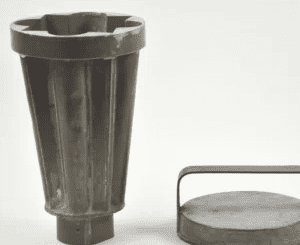Kitchen appliances often hold a place of sentiment in our homes. They’re not just tools; they’re part of family traditions and memories. My aunt’s 20-year-old stove is a perfect example. She swears by it, claiming it still works just fine, and sees no reason to replace it. However, I can’t shake the feeling that an appliance that old might not be safe. This raises an important question: how long do stoves last, and when is it time to consider an upgrade for safety and efficiency?
The Typical Lifespan of a Stove

On average, stoves last around 13 to 15 years. However, this lifespan depends on the brand, model, and most importantly, how well it’s maintained. A stove used infrequently may last longer, while one that’s used daily might start showing wear and tear sooner. Some stoves do last beyond the 15-year mark, but pushing an appliance past its prime could increase the likelihood of breakdowns or even safety hazards. Knowing these general expectations can help determine whether it’s time for a new stove or if a few more years can be squeezed out with the right maintenance.
Signs That a Stove Might Need Replacement
A stove may keep working beyond its typical lifespan, but that doesn’t mean it’s running optimally. Here are some signs that your stove might be nearing the end of its useful life:
- Inconsistent Heating: If burners or the oven no longer heat evenly, it can make cooking frustrating and unsafe.
- Burners That Don’t Ignite Properly: Gas burners that fail to ignite on the first try can indicate faulty igniters or gas flow issues.
- Unusual Noises: Odd clicks, hums, or pops may signal problems with electrical components or gas flow.
- Visible Signs of Wear: Rust, discoloration, or damaged parts are clear indicators that the stove is aging.
- Frequent Repairs: When repair costs start piling up, it may make more sense to invest in a new stove.
Older stoves also tend to be less energy-efficient, consuming more gas or electricity, which can lead to higher utility bills. If your stove shows any of these signs, it might be time to weigh the pros and cons of repair versus replacement.
Safety Concerns with Older Stoves
One of the biggest worries about older stoves is safety. With time, components degrade, which can lead to potential hazards. Gas stoves, for instance, rely on seals and connections that can weaken over the years. A deteriorated seal could cause a dangerous gas leak, which poses risks of fire or carbon monoxide poisoning. Electric stoves have their own set of issues; old wiring or faulty heating elements can lead to electrical fires or shocks.
While regular maintenance can mitigate some of these risks, there comes a point where replacement becomes the safer, more reliable option.
The Importance of Regular Maintenance for Appliance Longevity
Keeping your stove clean and well-maintained can extend its life and help it run safely. Maintenance tasks include cleaning the burners, wiping down the stove regularly, and inspecting for gas leaks. For gas stoves, it’s essential to check the connections and test for leaks. For electric models, checking that all heating elements work and ensuring the wiring is intact is key. Some maintenance tasks can be done on your own, but it’s wise to have a professional inspection occasionally, especially for gas stoves.
Regular upkeep helps your stove operate efficiently, extends its life, and reduces the risk of unexpected malfunctions or hazards.
Comparing Old and New Stove Technologies

Over the last two decades, stove technology has advanced dramatically. Modern stoves offer features that not only improve cooking but also enhance safety and convenience. Some of the advancements include:
- Induction Cooking: Induction stoves heat food using magnetic currents, which are faster and more energy-efficient than traditional methods.
- Smart Technology: Many new models can be connected to a smartphone or voice assistant, offering remote control, timer settings, and safety alerts.
- Energy Efficiency: Today’s stoves are designed with eco-friendly materials and energy-saving technology, leading to lower utility costs.
- Automatic Shut-off Features: Newer stoves often have features that shut off the heat when they detect no activity, reducing the risk of accidents.
These updates aren’t just for show; they can significantly improve safety and make cooking more enjoyable. If a stove is nearing the end of its lifespan, upgrading to a modern model may offer a safer, more efficient, and ultimately more satisfying cooking experience.
When Should You Replace Your Stove?
Deciding when to replace a stove isn’t always easy. Here are a few factors to consider:
- Age: If your stove is 15 years old or more, it might be time to consider a replacement.
- Performance: If it’s showing signs of wear or failing to cook evenly, an upgrade could be worth it.
- Safety: If there are any signs of gas leaks, electrical issues, or frequent malfunctions, don’t take chances—replace it.
- Repair Costs: If the cost of repairs is approaching or exceeding the cost of a new stove, it’s time to upgrade.
If the stove meets any of these criteria, replacing it may be the best choice to ensure safety and efficiency.
How to Convince a Loved One to Replace an Old Stove

It can be challenging to persuade someone to replace an old appliance, especially if they’re attached to it. My aunt, for example, holds onto her 20-year-old stove out of habit and nostalgia. Here are some tips that might help you make a convincing case:
- Focus on Safety: Emphasize the potential safety risks associated with old appliances, such as gas leaks or electrical issues.
- Highlight Energy Efficiency: Point out that a newer stove could lower utility bills over time.
- Discuss Repair Costs: Compare the ongoing repair costs of an old stove to the one-time investment of a new one.
- Offer to Help: Sometimes, helping a loved one shop or even contributing to the purchase can make a difference.
Ultimately, framing it as an upgrade for safety and convenience, rather than just a replacement, might make them more receptive to the idea.
Conclusion: When It’s Time to Let Go of Sentimentality
While sentimental value can make it hard to part with old appliances, safety and practicality should always come first. Stoves may last beyond their typical lifespan, but they aren’t designed to last forever, and using one beyond its safe years could pose serious risks. By knowing the lifespan of a stove, recognizing signs of wear, and understanding the benefits of new technology, you can make an informed decision about when it’s time to replace an old stove.
Balancing the nostalgia of a beloved appliance with the need for a safe, efficient kitchen can lead to better choices that ensure peace of mind. And while my aunt might still love her old stove, understanding the risks and rewards of a new appliance might just help her see the value in letting go and embracing a safer, modern kitchen.


